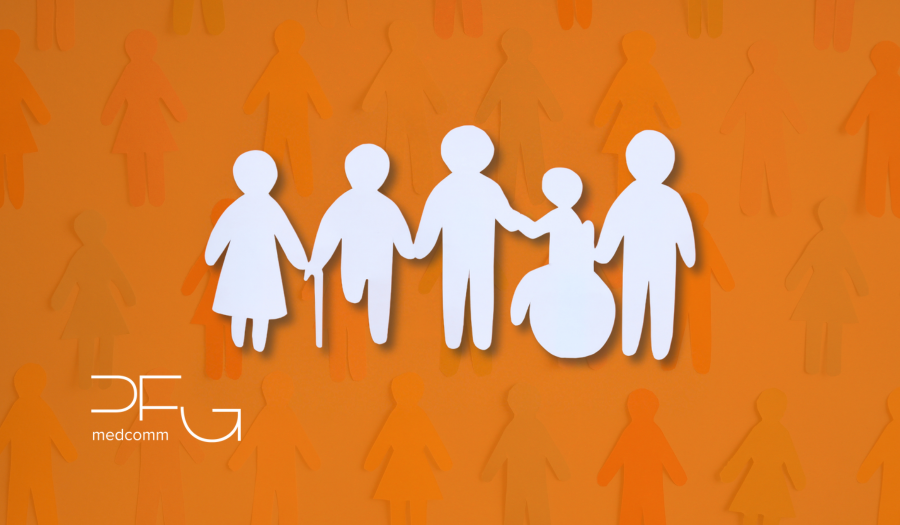Exploring Alternative Payment Models in Healthcare
For years, the standard method of payment to physicians has been “fee-for-service” (FFS). This method was introduced in the 1930s and refers to...
4 min read
PFG MedComm Team Feb 6, 2024 10:34:32 AM

In the ever-evolving landscape of healthcare, a challenge persists – the unequal distribution, access, and quality of care for individuals. In response to this imperative, grassroots organizations strive to narrow the gap in the quality of care among diverse populations and improve health outcomes across demographics. As the global spotlight on health equity continues to intensify, grassroots organizations are collaborating with stakeholders to enhance health access across intersectional communities. This article aims to define health equity, examine its presence in our communities, and showcase ground-up initiatives by healthcare stakeholders actively addressing gaps in health equity.
The World Health Organization defines health equity as “[T]he absence of unfair, avoidable, or remediable differences among groups of people, whether those groups are defined socially, economically, demographically, or geographically or by other dimensions of inequality (e.g., sex, gender, ethnicity, disability, or sexual orientation). Health is a fundamental human right. Health equity is achieved when everyone can reach their full potential for health and well-being.”
Health inequity stems from disparities in healthcare access, quality, and outcomes, influenced by complex social, economic, environmental, and political factors. To achieve equity, it's vital to address systemic issues and enhance accessibility, literacy, and community engagement. Inequitable healthcare is rooted in social determinants like income, education, employment, housing, and access to healthy food, creating barriers to optimal health. Systemic elements such as discrimination and unequal resource distribution contribute to adverse health effects. Populations prone to health inequity include those affected by factors like race, ethnicity, gender, sexual orientation, geographic region, and income level. Addressing these challenges is crucial for fostering a more equitable and accessible healthcare system.
Grassroots organizations embed themselves in underserved communities, shaping their services to address specific needs. They amplify voices, advocate for diverse perspectives, and actively collaborate with local leaders to implement solutions. By working closely with various stakeholders, they assume crucial roles in tackling health disparities and promoting public health initiatives. This active engagement enhances awareness and optimizes resource coordination, directly helping individuals and communities navigating healthcare disparities. Simultaneously, they create space to nurture cultural competencies which helps dismantle barriers between communities and healthcare providers.
Serving as hubs for collaboration and innovation, grassroot organizations bridge underserved communities with healthcare services. Please note that the examples of initiatives provided below are not exhaustive and offer only a glimpse into the various grassroots efforts taking place globally to confront and reduce health disparities.
Individuals and communities around the world face ongoing challenges of unequal distribution, access, and quality of care, requiring a comprehensive approach to address multifaceted factors that hinder health equity. The pursuit of health equity involves tackling intricate social, economic, environmental, and political issues that inextricably affect factors like income, education, employment, housing, and access to healthy food. Recognizing that the fight against health inequity is both multidimensional and complex, grassroots organizations play a pivotal role by supplying unique need-based services, amplifying voices, and fostering cultural competencies. This collective effort underscores a commitment to reducing health disparities and striving for universal health equity, recognizing the diverse needs of individuals in their journey toward optimal health.
______
At PFG MedComm, we continuously explore innovative approaches and can help you navigate the complexities of the healthcare payor landscape. Click here to download PFG MedComm’s Ultimate Guide to Market Access.
Need assistance in crafting revolutionized enhancements to your value communication strategy with market access stakeholders? At PFG MedComm, we continuously explore innovative approaches.

For years, the standard method of payment to physicians has been “fee-for-service” (FFS). This method was introduced in the 1930s and refers to...

Technological innovation has had an immense impact on healthcare delivery. Novel medical devices and cutting-edge pharmaceuticals continue to...